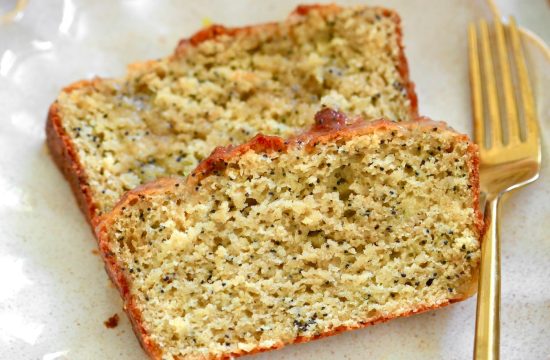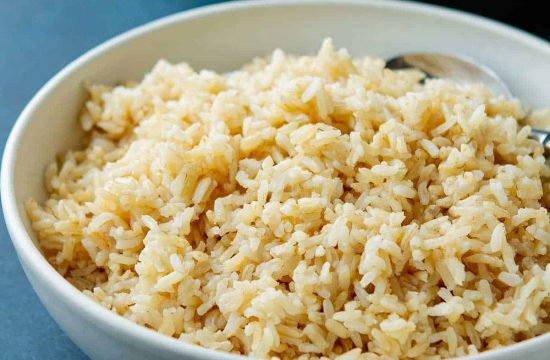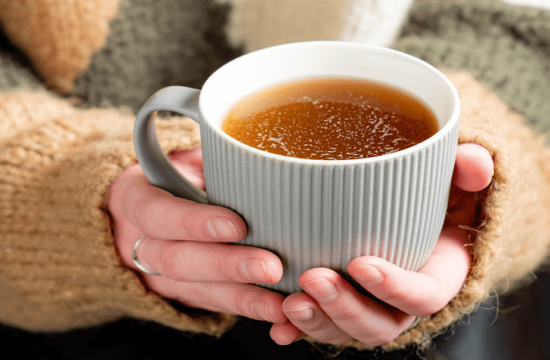The 9th chapter of Nidanasthanam of Ashtanga Hridayam is named as Mutraghata Nidanam Adhyayah. This chapter deals with the explanation of ‘diagnosis of retention of urine’.
The topics covered in this chapter include –
– Gudasthi vivara angani – organs of pelvic cavity
– Pathogenesis of mutraghata and prameha
– Mutrakrichchra – dysuria
– Ashmari – urinary calculi, its premonitory symptoms and symptoms
– Vataja, Pittaja, Kaphaja types of calculi
– Shukrashmari – seminal calculi
– Vatabasti
– Vatashtila
– Bastikundalika
– Mutratita
– Mutrajathara
– Mutrotsanga
– Mutragranthi
– Mutrashukra
– Vidvighata
– Ushnavata
– Mutrakshaya
– Mutrasada
Pledge by the author(s)
अथातो मूत्राघातनिदानं व्याख्यास्याम ।
इति ह स्माहुरात्रेयादयो महर्षय: ।
After having offered prayers to the God, henceforth we are going to explain the chapter pertaining to the explanation of ‘diagnosis of retention of urine’. Thus say (pledge) Atreya and other sages.
Gudasthi Vivara Angani: Organs of pelvic cavity
बस्तिबस्तिशिरोमेढ्रकटीवृषणपायवः ।
एकसम्बन्धनाः प्रोक्ता गुदास्थिविवराश्रयाः ॥ १ ॥
The urinary bladder, head of the urinary bladder, penis, waist, testicles, rectum are all related to one another and situated within the cavity of the rectal bone (pelvis).
Notes: Head of the urinary bladder means the two ureters, which connect the kidneys with the bladder; penis hereafter refers to the urethral passage, testicles are outside the pelvis and not connected to the bladder so also the rectum. Mutraghata is inability to pass urine though the bladder is full (retention of urine).
Pathogenesis of mutraghata (retention of urine) and prameha (diabetes)
अधोमुखोऽपि बस्तिर्हि मूत्रवाहिसिरामुखैः ।
पार्श्वेभ्यः पूर्यते सूक्ष्मैः स्यन्दमानैरनारतम् ॥ २ ॥
यैस्तैरेव प्रविश्यैनं दोषाः कुर्वन्ति विंशतिम् ।
मूत्राघातान् प्रमेहांश्च कृच्छ्रान्मर्मसमाश्रयान् ॥ ३ ॥
Though situated with its mouth downwards, the urinary bladder gets filled from(all) its sides through the minute channels carrying urine, which are secreting (oozing) without break (continuously throughout day and night). The doshas entering (the bladder) through these channels produce the twenty kinds of mutraghata (retention of urine) and prameha (diabetes) which are difficult to treat, residing in this marma (vital organ, the urinary bladder).
Mutrakrichchra (dysuria, strangury)
बस्तिवङ्क्षणमेढ्रार्तियुक्तोऽल्पाल्पं मुहुर्मुहुः ।
मूत्रयेद्वातजे कृच्छ्रे पैत्ते पीतं सदाहरुक् ॥ ४ ॥
रक्तं वा कफजे बस्तिमेढ्रगौरवशोफवान् ।
सपिच्छं सविबन्धं च सर्वैः सर्वात्मकं मलैः ॥ ५ ॥
In mutrakrccha (dysuria) caused by vata, there is pain in the region of he bladder, groins and penis; the person voids urine in small quantities, frequently; in that caused by pitta, the urine is yellow, voided accompanied with burning sensation he may void urine with pain or along with urine in that arising from kapha, the person has heaviness with edema, and voids urine which is slimy, with disruption; in that caused by all the doshas, all the symptoms are exhibited.
Ashmari (urinary calculus)
यदा वायुर्मुखं बस्तेरावृत्य परिशोषयेत् ।
मूत्रं सपित्तं सकफं सशुक्रं वा तदा क्रमात् ॥ ६ ॥
सञ्जायतेऽश्मरी घोरा पित्ताद्गोरिव रोचना ।
श्लेष्माश्रया च सर्वा स्यात्
When the Vayu covers the mouth of the bladder and dries up the urine, then urine getting mixed with Pitta, Kapha or semen, gives rise to the formation of Ashmari (stone, calculi) just as Gorochana (ox gall) gets formed from Pitta (bile) in the ox; all of these are having Kapha as their receptacle (their mass).
Purvarupa (premonitory symptoms) of Ashmari
अथास्याः पूर्वलक्षणम् ॥ ७ ॥
वस्त्याध्मानं तदासन्नदेशेषु परितोऽतिरुक् ।
मूत्रे च बस्तगन्धत्वं मूत्रकृच्छ्रं ज्वरोऽरुचिः ॥ ८ ॥
Its premonitory symptoms are distention of the bladder, severe pain in and around the sites of stone, urine emitting the smell of goat, difficulty for elimination of urine, fever loss of appetite.
Rupa (Clinical features) of Ashmari
सामान्यलिङ्गं रुङ्नाभिसेवनीबस्तिमूर्धसु ।
विशीर्णधारं मूत्रं स्यात्तया मार्गनिरोधने ॥ ९ ॥
तद्व्यपायात्सुखं मेहेदच्छं गोमेदकोपमम् ।
तत्सङ्क्षोभात्क्षते सास्रमायासाच्चातिरुग्भवेत् ॥ १० ॥
Its general symptoms are pain near the umbilicus, raphae, and head of the bladder; stream of urine interrupted when its path is obstructed (by the stone) and easy flow when its path is free; urine is clear, resembles Gomedaka gem (dolomite) in colour (yellow), when it (stone) causes a wound by friction / irritation, the urine will be mixed with blood, pain becomes more on exertion (straining to pass urine).
Vataja Ashmari
तत्र वाताद्भृशार्त्यार्तो दन्तान्खादति वेपते ।
मृद्नाति मेहनं नाभिं पीडयत्यनिशं क्वणन् ॥ ११ ॥
सानिलं मुञ्चति शकृन् मुहुर्मेहति बिन्दुशः ।
श्यावा रूक्षाश्मरी चास्य स्याच्चिता कण्टकैरिव ॥ १२ ॥
In Ashmari caused by Vata, the pain is very severe, so the person grinds his teeth, shivers, squeezes the penis, rubs the umbilicus, crying constantly; voids faeces accompanied with flatus, urinates too frequently and in drops; the stone is black, rough, and studded with thorny projections.
Pittaja Ashmari
पित्तेन दह्यते बस्तिः पच्यमान इवोष्मवान् ।
भल्लातकास्थिसंस्थाना रक्ता पीतासिताश्मरी ॥ १३ ॥
In Ashmari caused by Pitta, there is burning sensation in the bladder, as though suppurated, ulcerated, and is very warm, the stone resembles the seed of Bhallataka (in shape), red, yellow or black in colour.
Kaphaja Ashmari
बस्तिर्निस्तुद्यत इव श्लेष्मणा शीतलो गुरुः ।
अश्मरी महती श्लक्ष्णा मधुवर्णाथवा सिता ॥ १४ ॥
In Ashmari caused by Kapha, there is pricking pain in the bladder feeling of cold and heaviness; the stone is big, smooth, of the color of honey or white.
Urinary calculus in children
एता भवन्ति बालानां तेषामेव च भूयसा ।
आश्रयोपचयाल्पत्वाद्ग्रहणाहरणे सुखाः ॥ १५ ॥
These (above three types of Ashmari) occur more commonly in children Ashmari are easy to grasp (with instruments) and to pull out, because the receptacle (urinary blander) is small, not fully grown.
Shukrashmari (seminal calculi)
शुक्राश्मरी तु महतां जायते शुक्रधारणात् ।
स्थानाच्च्युतममुक्तं हि मुष्कयोरन्तरेऽनिलः ॥ १६ ॥
शोषयत्युपसङ्गृह्य शुक्रं तच्छुष्कमश्मरी ।
बस्तिरुक्कृच्छ्रमूत्रत्वमुष्कश्वयथुकारिणी ॥ १७ ॥
तस्यामुत्पन्नमात्रायां शुक्रमेति विलीयते ।
पीडिते त्ववकाशेऽस्मिन्न्
Seminal stone gets formed in adults due to suppression of the flow of semen which has left its seat (of production) but not ejaculated it gets dried of its moisture by Vata Dosha inside the scrotum by withholding the semen, that is Sukrasmari ( seminal calculi). There is pain in the bladder, difficult urination, produces swelling of the scrotum, soon after Shukra Ashmari formation; the semen liquefies and flows but stops in the middle and comes out through the channel when squeezed.
Shukrashmari (seminal calculi)
अश्मर्यैव च शर्करा ॥ १८ ॥
अणुशो वायुना भिन्ना सा त्वस्मिन्ननुलोमगे ।
निरेति सह मूत्रेण प्रतिलोमे विबध्यते ॥ १९ ॥
Sharkara (urinary gravel) is urinary stone itself, but broken to small pieces by Vata, coming out along with urine when Vata is having downward movement and obstructing the flow of urine when (Vata is) having upward movement.
Vatabasti
मूत्रसन्धारिणः कुर्याद्रुद्ध्वा बस्तेर्मुखं मरुत् ।
मूत्रसङ्गं रुजं कण्डूं कदाचिच्च स्वधामतः ॥ २० ॥
प्रच्याव्य बस्तिमुद्वृत्तं गर्भाभं स्थूलविप्लुतम् ।
करोति तत्र रुग्दाहस्पन्दनोद्वेष्टनानि च ॥ २१ ॥
बिन्दुशश्च प्रवर्तेत मूत्रं बस्तौ तु पीडिते ।
धारया द्विविधोऽप्येष वातबस्तिरिति स्मृतः ॥ २२ ॥
दुस्तरो दुस्तरतरो द्वितीयः प्रबलानिलः ।
In a person who suppress the urge of urination habitually, Vata being aggravated, blocks the mouth of the urinary bladder, causes blockage of urine, pain itching sensation and sometimes the bladder gets too much distended, displaced upward, resembling a gravid uterus, hard and full of fluid, accompanied with pain, burning sensation, throbbing pain and twisting type of pain; urine comes out in drops upon squeezing the bladder. This disease is known as Vatabasti and is of two types based on urine flow viz, Dustara (difficult to bear and treat). The second one more grave and is caused by the powerful Vata
Vatasthila
शकृन्मार्गस्य बस्तेश्च वायुरन्तरमाश्रितः ॥ २३ ॥
अष्ठीलाभं घनं ग्रन्थिं करोत्यचलमुन्नतम् ।
वाताष्ठीलेति साध्मानविण्मूत्रानिलसङ्गकृत् ॥ २४ ॥
Vata (aggravated) getting localized in between the rectum and the urinary bladder, gives rise to a hard, elevated, immovable tumor resembling the cobblers stone, this is known as Vatasthila, and causes distention of the abdomen and hindrance to urine, feces, and flatus.
Bastikundalika
विगुणः कुण्डलीभूतो बस्तौ तीव्रव्यथोऽनिलः ।
आविध्य मूत्रं भ्रमति सस्तम्भोद्वेष्टगौरवः ॥ २५ ॥
मूत्रमल्पाल्पमथवा विमुञ्चति शकृत्सृजन् ।
वातकुण्डलिकेत्येषा
Vata aggravated moving in a circular way in the bladder causes severe pain, circular movement of urine inside the bladder itself, causing obstruction to its flow, local Vata vitiation and heaviness of the bladder; urine is released out little by little, or accompanied with elimination of faeces. This disease is called Vata kundalika.
Mutratita
मूत्रं तु विधृतं चिरम् ॥ २६ ॥
न निरेति विबद्धं वा मूत्रातीतं तदल्परुक् ।
By Suppressing the urge of micturition for long time, urine fails to come out being obstructed, or urination happens with mild pain;
मूत्रातीतं तत् – mūtrātītaṃ tat – that is Mutratita.
Mutrajathara
विधारणात्प्रतिहतं वातोदावर्तितं यदा ॥ २७ ॥
नाभेरधस्तादुदरं मूत्रमापूरयेत्तदा ।
कुर्यात्तीव्ररुगाध्मानमपक्तिं मलसङ्ग्रहम् ॥ २८ ॥
तन्मूत्रजठरं
By the habit of suppressing the urge to urinate, Vata getting obstructed when begins to move upwards, then the bladder, full of urine, causes distention of abdomen below the umbilicus, and causes severe pain, distension of the abdomen, indigestion and accumulation of faeces. That disease is Mutra jathara.
Mutrotsanga
छिद्रवैगुण्येनानिलेन वा ।
आक्षिप्तमल्पं मूत्रं तद्वस्तौ नालेऽथवा मणौ ॥ २९ ॥
स्थित्वा स्रवेच्छनैः पश्चात्सरुजं वाथ नीरुजम् ।
मूत्रोत्सङ्गः स विच्छिन्नतच्छेषगुरुशेफसः ॥ ३० ॥
Either due to abnormalities of the urinary passage by aggravation of Vata, small quantity of urine staying either in the bladder, urethra or the glans-penis, gets obstructed comes out slowly, or urination happens with delay, with or without pain; the residual urine causes heaviness of the penis, and interrupted urination such a disease is Mutrotsanga.
Mutragranthi
अन्तर्वस्तिमुखे वृत्तः स्थिरोऽल्पः सहसा भवेत् ।
अश्मरीतुल्यरुग्ग्रन्थिर्मूत्रग्रन्थिः स उच्यते ॥ ३१ ॥
A round, immovable, hard and small tumour developing suddenly inside the mouth (cavity) of the urinary bladder, producing pain resembling that of urinary stone, is known as Mutragranthi.
Mutrashukra
मूत्रितस्य स्त्रियं यातो वायुना शुक्रमुद्धतम् ।
स्थानाच्च्युतं मूत्रयतः प्राक्पश्चाद्वा प्रवर्तते ॥ ३२ ॥
भस्मोदकप्रतीकाशं मूत्रशुक्रं तदुच्यते ।
The person with urge to urination, indulges in sexual intercourse, Shukra which is displaced from its place by aggravated Vata Shukra comes out either prior to or after urination, the urine resembles solution of ash. That disease is called Mutrashukra.
Vidvighata
रूक्षदुर्बलयोर्वातादुदावर्तं शकृद्यदा ॥ ३३ ॥
मूत्रस्रोतोऽनुपर्येति संसृष्टं शकृता तदा
मूत्रं विट्तुल्यगन्धं स्याद्विड्विघातं तमादिशेत् ॥ ३४ ॥
In persons who are dry (with loss of fat) and debilitated, when feces is moved upwards due to aggravated Vata, then it brings obstructed feces (small quantity of fecal matter) into the channels of urine (bladder and urethra); the urine has the odor of feces. This disease is Vidvighata
Ushnavata
पित्तं व्यायामतीक्ष्णोष्णभोजनाध्वातपादिभिः ।
प्रवृद्धं वायुना क्षिप्तं वस्त्युपस्थार्तिदाहवत् ॥ ३५ ॥
मूत्रं प्रवर्तयेत्पीतं सरक्तं रक्तमेव वा ।
उष्णं पुनः पुनः कृच्छ्रादुष्णवातं वदन्ति तम् ॥ ३६ ॥
Pitta getting aggravated by exercise, foods which are penetrating and hot, long-distance walk, basking in the sun for long periods, etc. Pitta is quickly aggravated along with Vata, gets lodged in bladder and urethra causing pain and burning sensation urine is yellow, mixed with blood or only blood flows out, urine is warm, comes out again and again with difficulty.Thus is called as Ushnavata.
Mutrakshaya
रूक्षस्य क्लान्तदेहस्य बस्तिस्थौ पित्तमारुतौ ।
मूत्रक्षयं सरुग्दाहं जनयेतां तदाह्वयम् ॥ ३७ ॥
In persons with dry and debilitated body, Pitta and Maruta (Vata) getting localized in the urinary bladder generates burning sensation and pain, causes decreased production of urine and is called Mutrakshaya.
Mutrasada
पित्तं कफो द्वावपि वा संहन्येतेऽनिलेन चेत् ।
कृच्छ्रान्मूत्रं तदा पीतं रक्तं श्वेतं घनं सृजेत् ॥ ३८ ॥
सदाहं रोचनाशङ्खचूर्णवर्ण भवेच्च तत् ।
शुष्कं समस्तवर्णं वा मूत्रसादं वदन्ति तम् ॥ ३९ ॥
Pitta and Kapha either separately or in combination gets aggravated by Vata, then they produce difficult urination, urine is yellow, red or white and thick; associated with burning sensation, resembling the colors of ox-gall or powder of conch shell or of all colors mixed together and is dry (non-unctous); this is called Mutrasada.
Chapter summary
इति विस्तरतः प्रोक्ता रोगा मूत्राप्रवृत्तिजाः ।
निदानलक्षणैरूर्ध्वं वक्ष्यन्तेऽतिप्रवृत्तिजाः ॥ ४० ॥
Thus were described in detail, the diseases characterized with difficulty or absence of urination along with their causes and clinical features; those diseases characterized with excess urination will be described further in the next chapter.
इति श्री वैद्यपति सिंहगुप्तसूनु श्रीमद्वाग्भटविरचितायामष्टाङ्गहृदयसंहिताया तृतीये निदानस्थाने मूत्राघातनिदानं नाम नवमोऽध्याय: ॥९॥
Thus ends the chapter Mutraghata Nidana- the ninth in Nidanasthana of Astangahrudaya Samhita composed by Srimad Vagbhata, son of Sai Vaidyapati Simhagupta.















